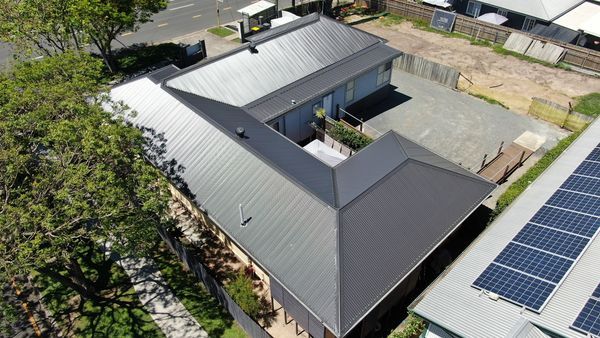Asbestos, once heralded for its fire-resistant properties and durability, has left a lasting legacy in many Australian homes, particularly in Brisbane. While the material has been banned since the early 2000s, many older buildings still contain asbestos roofs, raising concerns about their environmental impact and public health. In this post, we’ll explore the implications of asbestos roofs in Brisbane and what homeowners can do to mitigate risks.

Understanding Asbestos and Its Use in Roofing
Asbestos is a naturally occurring mineral that was widely used in construction due to its heat resistance, strength, and insulating properties asbestos roof restoration brisbane. In Brisbane, many homes built before the 1990s may have asbestos roofs. While intact asbestos materials pose minimal risk, deterioration can release harmful fibers into the air, leading to serious health issues, including asbestosis and lung cancer.
Environmental Concerns
- Air Quality: The primary concern with asbestos roofs is the potential release of fibers into the environment. As roofs age, they may crack, flake, or become damaged due to weather exposure. This degradation can compromise air quality, especially in densely populated areas.
- Waste Management: Removing and disposing of asbestos roofs presents significant environmental challenges. Asbestos waste must be handled according to strict regulations to prevent contamination. Improper disposal can lead to soil and water pollution, impacting local ecosystems.
- Building Longevity: Asbestos roofs are often still functional and can last for decades. However, as they reach the end of their lifespan, the decision to remove or replace them involves weighing environmental impacts against safety concerns.
Health Risks to Residents
The health risks associated with asbestos exposure are well-documented. Brisbane’s warm climate can exacerbate the wear and tear on older roofs, increasing the risk of fiber release. Homeowners should be aware of signs of damage, such as cracks or discoloration, and take appropriate action.
What Homeowners Can Do
- Inspection: If you suspect your home has an asbestos roof, it’s crucial to have it inspected by a qualified professional. Regular inspections can help catch issues before they pose significant risks.
- Safe Removal: If removal is necessary, hire licensed asbestos removalists who follow proper safety protocols. This not only protects your health but also minimizes environmental impact.
- Consider Alternatives: When replacing an asbestos roof, consider eco-friendly materials that provide durability and reduce environmental harm. Options such as metal roofing or environmentally friendly tiles can offer better long-term solutions.
- Community Awareness: Engage with your community about the risks of asbestos. Local councils often provide resources and information on safe handling and disposal, which can help raise awareness.
The Way Forward
As Brisbane continues to grow, addressing the legacy of asbestos in its buildings is essential. By understanding the environmental impacts of asbestos roofs and taking proactive measures, homeowners can protect their health and contribute to a cleaner, safer environment. It’s a collective responsibility that ensures Brisbane remains a vibrant and sustainable city for future generations.
Conclusion
The presence of asbestos roofs in Brisbane is a reminder of the importance of environmental and public health awareness. While the challenges posed by asbestos are significant, informed action can mitigate risks and foster a healthier community. Whether you’re a homeowner or a concerned citizen, staying informed and advocating for safe practices can make a substantial difference.